Epomaker is at it again, sending out more keyboards to review. This time we have something a bit more traditional, with a few bells and whistles to add to the fun, all available for around $120. Join me as I take a look through the Epomaker Tide75.
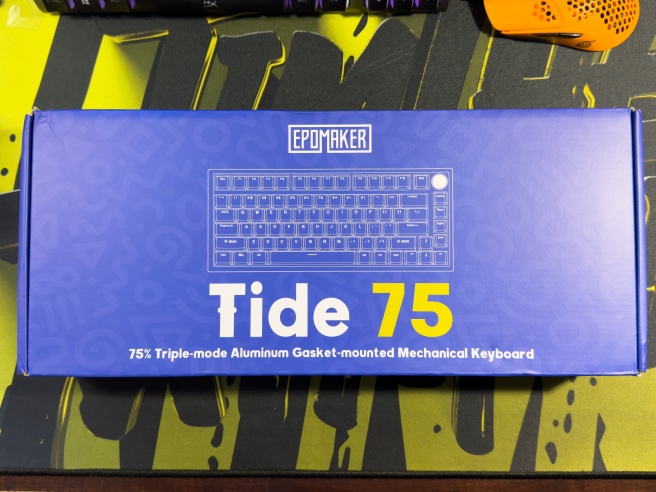
The Epomaker Tide75 is a mid-size keyboard with a full function row and a handful of additional system keys. The board sports a two-part aluminum frame, linear switches, and a rotary dial button. For this review I selected the anodized purple colorway, but the keyboard is also available in black (anodized,) pink (anodized,) or blue (electrophoretic coating.) The stock keycaps are OEM profile to provide a pretty standard typing feel, and feature side-facing legends for a very gamer-esq look. The board is hot-swappable, via-programmable, and equipped with a full array of RGB backlights. It ships with a standard USB-A to USB-C cable, a keycap and switch puller tool, and an Allen wrench to get to the internals.
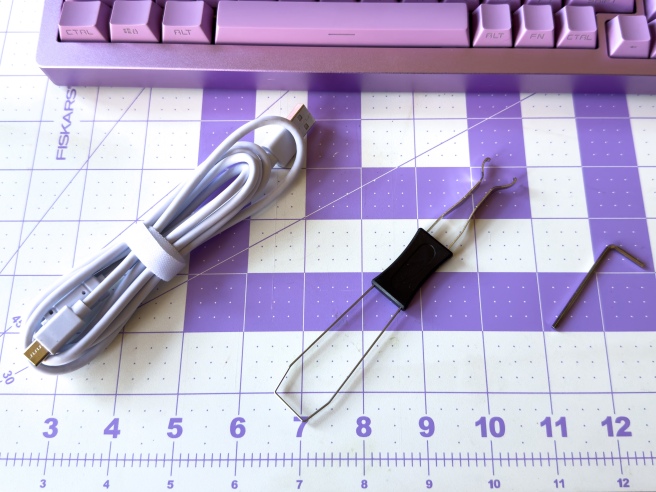
The Tide75 ships with Epomaker’s Lemon switches which are linear and have a very light press, reaching their actuation point with only 40 grams of pressure. These switches feel much lighter than standard linear switches, and make typing on the board a very airy and easy feel. If lightweight switches aren’t your thing, you can also swap them out to nearly any three- or five-pin mechanical switch.
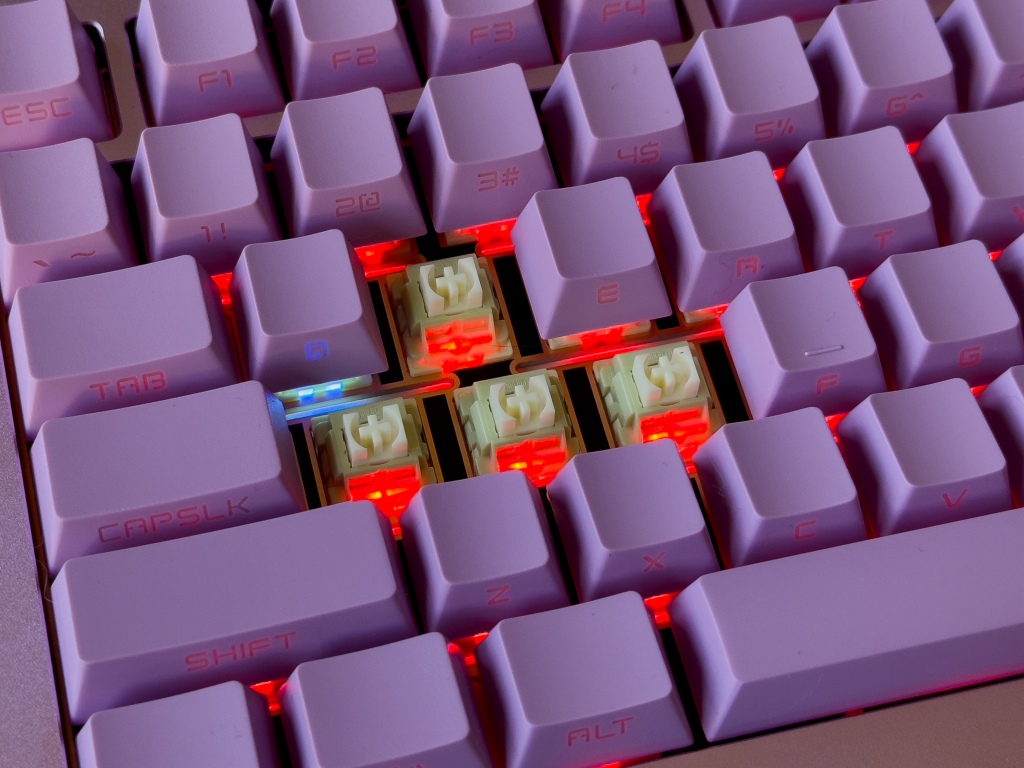
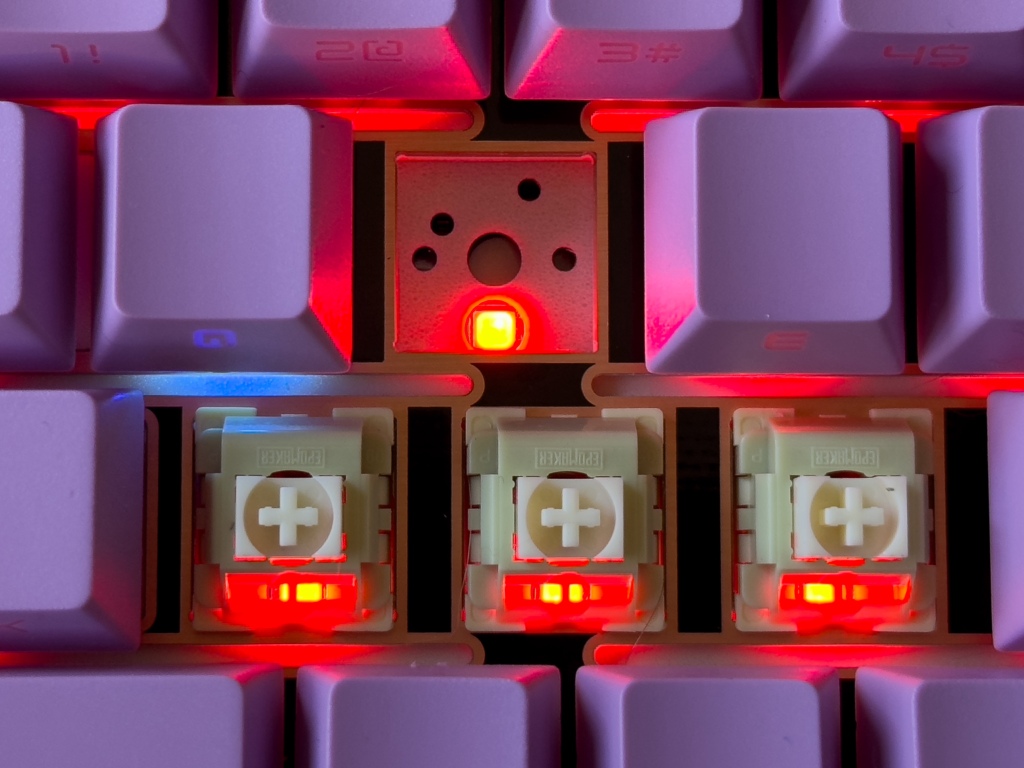
The rotary knob is another great feature that has become very popular on keyboards in the past few years. With factory settings, the knob is used to adjust system volume or mute it with a press. Linking the board to the VIA online software allows you to reprogram that function along with every other key to have a completely customized experience. Like the last keyboard I reviewed, there is the extra step of downloading the keyboard profile from Epomaker and uploading it to VIA in order to open up full customization, but that process is pretty simple and well-worth it.
The Tide75 also boasts some internal upgrades in the form of five foam layers that reduce vibration and dampen internal noise while typing. It also uses a “FR4” plate mount made of a high-density fiber that is meant be a middle-ground between ridgid aluminum plates and more flexible plastic plates. Underneath all of those structural components, the case also houses a 4000mAh battery that keeps the keyboard running in Bluetooth or 2.4GHz wireless mode for a reasonable amount of time between charges.
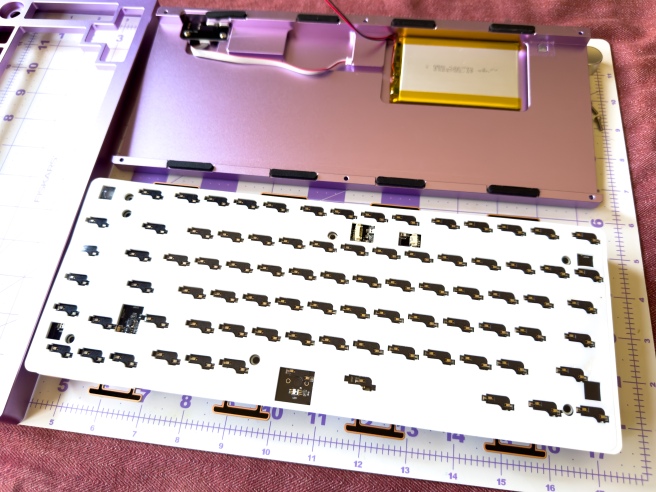
Using The Board
Typing on the Epomaker Tide75 is a pretty nice experience. The lightweight linear switches give a quick, almost instantaneous actuation when pressed, making it easy to quickly tap out a few paragraphs whenever you need to. I would rate the keycaps as good, not great. Structurally they are fine, and comfortable to type on in both surface finish and profile positioning. Unfortunately I’m not a super-fan of the side printed legends, though it does seem like a good choice for the south-facing PCB LEDs.
Gaming performance with the Tide75 can be a little iffy in its stock state. The light switches are great for typing, but I find myself accidentally pressing buttons fairly frequently while resting my hand or palm on the board. With that in mind, this keyboard is hot-swappable and compatible with pretty much any 3 or 5 pin mechanical switch on the market so I imagine there will be some customization in my future to address what few concerns I have.
The other key differentiator on this board is the aluminum frame, which is also a first for my keyboard collection. With a total weight of 1.8 kg (my fellow Americans, that’s 3.97 pounds) this is a pretty heavy device. The metal case sits upon four small rubber feet, but even without those I don’t think this would be at much risk of sliding around the desk. I have seen keyboards on the market that have optional heavy metal plate add-ons, but this one is pushing the limits of what I think I would want in my workspace.
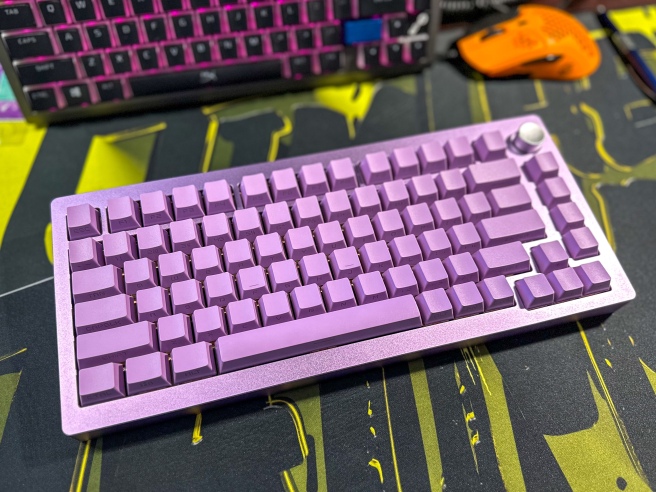
Connecting the keyboard through any of the three available options is fairly straightforward, though personally I keep the manual nearby as a reference. You can pair the keyboard to up to three bluetooth devices, and switch between them using the Fn+Q, W, or E keys. 2.4GHz mode is similar in that there is a key command to pair with the USB dongle (Fn+P.) Interestingly, there is also a key command (Fn+T) for pairing in wired mode. As fairly simple as these commands are, I feel like the user-friendliness would be greatly improved with some connectivity and battery life indicator LEDs. Or at least some simple legends around the two-step connection switch on the back of the case.
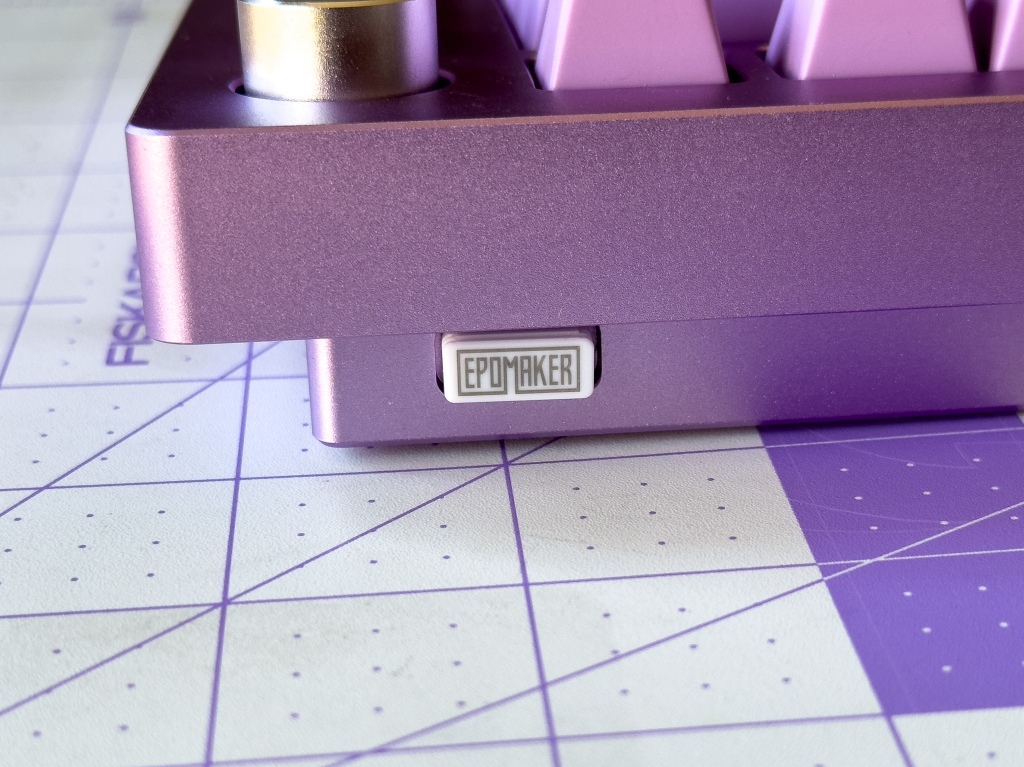
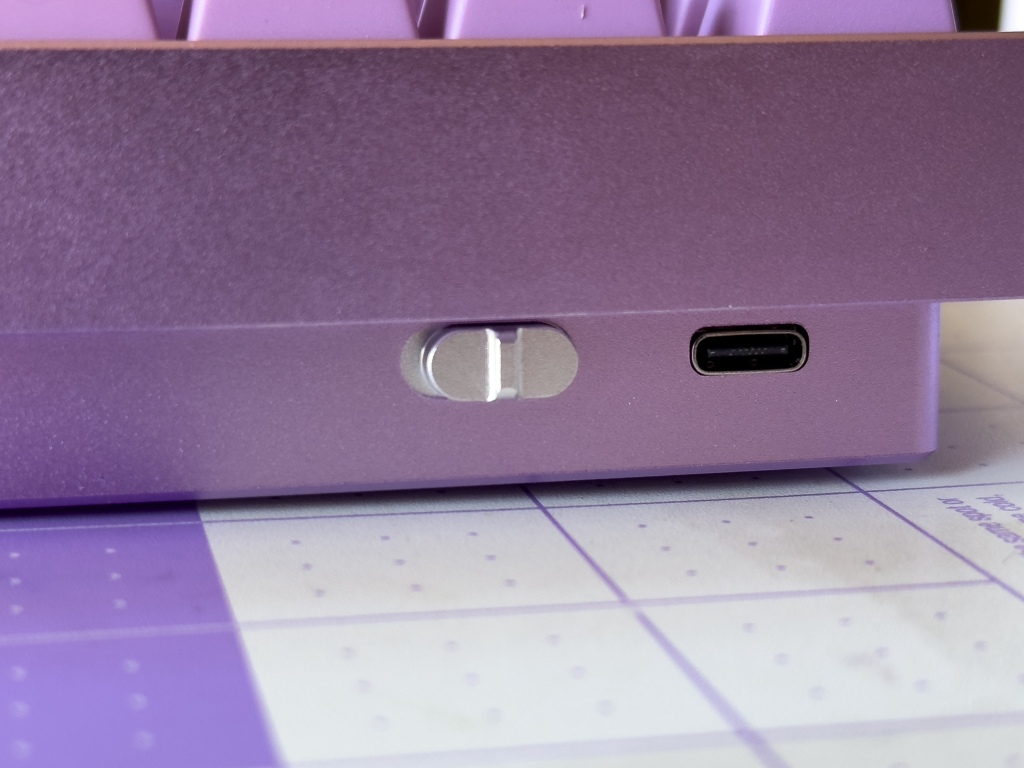
The Good,
There is a lot to like about the Tide75: I love the flexibility of a hot-swap platform that allows me to change up the characteristics of the board with minimal effort; I like having multiple connectivity options so I can switch between the two-to-three devices that inhabit my workspace on any given day; I enjoy the look and feel of the anodized aluminum case that gives it a more substantial presence; And I love the 75% format that maintains the function row and system keys without being too bulky.
I’m also happy to have joined the keyboard knob club. While the idea of having a rotary dial on a mechanical keyboard in not novel, it is something that is usually confined to more expensive devices. I personally tend to go between a handful of different programs on any given day, and for some reason they all tend to have differently-mastered audio. My somewhat-inelegant solution is to remap my mouse’s side buttons to be the volume up and down controls. This allows me to adjust system volume while in a work meeting or watching a YouTube video or playing a game. Having a volume dial right on my primary interface is far more convenient. 10/10 knob, no notes.
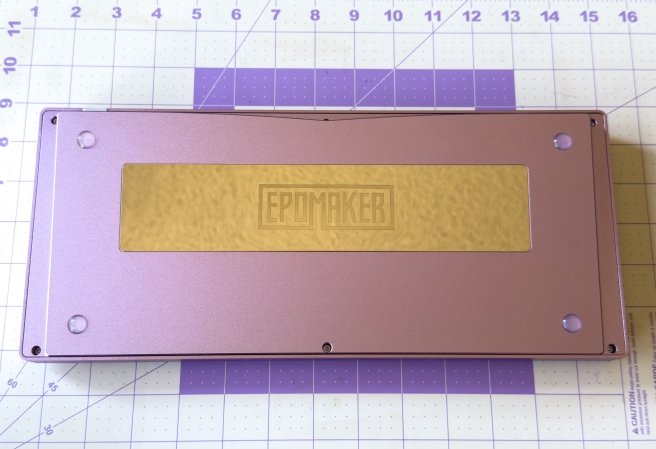
The Bad…
Well, there are a few things that could be better. As I mentioned, this keyboard is very heavy. I am at a point in my keyboard journey where I have, let’s say, a “higher-than-average” number of boards. While I don’t swap them out with the same frequency that I might change fountain pens, I do like to refresh my desk every now and then, or bring one into the office to socialize with the other keeb-heads. At nearly four pounds, the Tide75 was made to be parked on a desk.
The interface is also something that detracts from the overall experience. While the connectivity options are robust, the two-step switch and manual pairing in every mode are a bit inconvenient. It’s not a deal breaker, but an LED indicator would be fantastic.
…And The Conclusion
Complaints aside, this keyboard has a lot of great features for $119.99 (as configured.) Aesthetically it’s a ten out of ten, structurally it’s a beast, and functionally it’s a Jack of all trades. While I would not consider this keyboard (in it’s stock configuration) the first choice for capital-G “Gamers,” it does have a lot to offer for anyone who spends a lot of time typing. If you are in the market for a new keyboard, this one should be on your short list.
Check out the Epomaker Tide75 here.
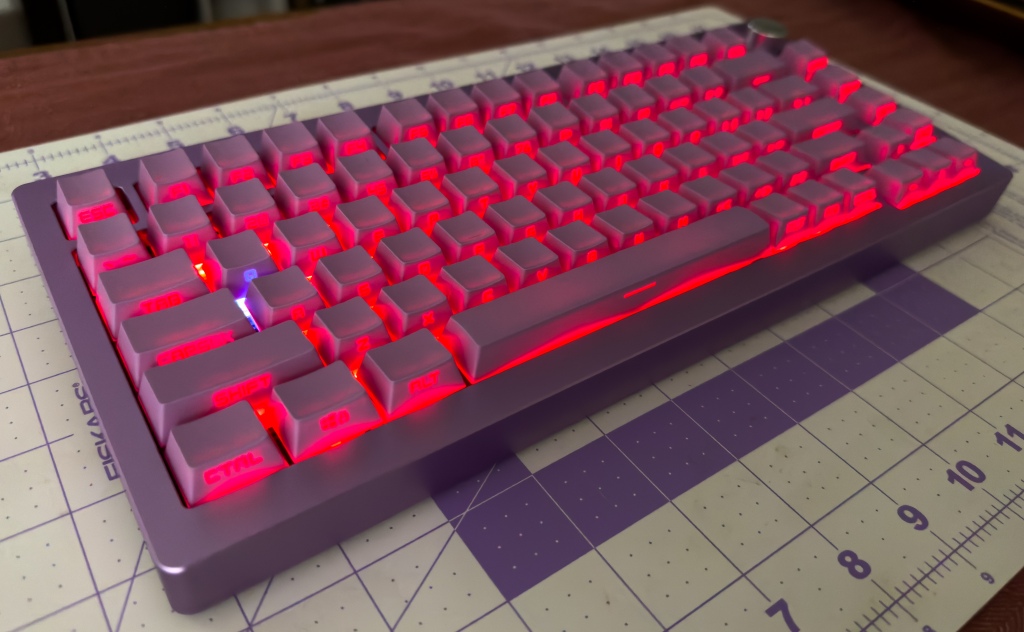
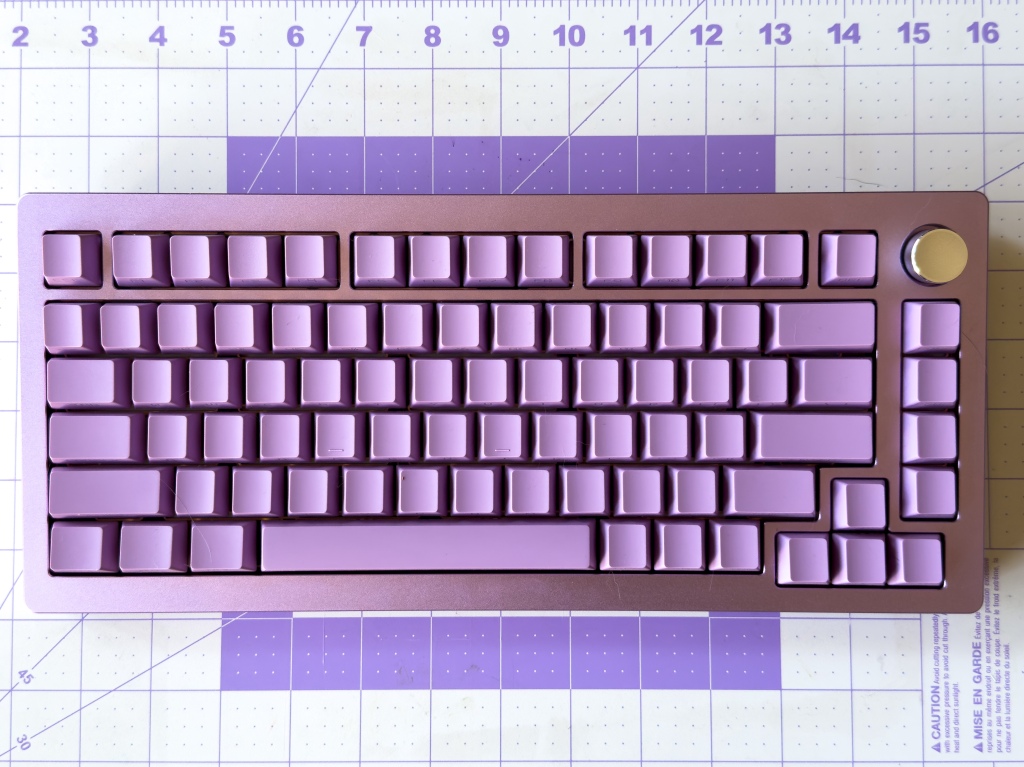
Disclaimer: Epomaker provided this keyboard free of charge for the purpose of review. They were not given early notice or review of the content of this post. All opinions stated are my own.
